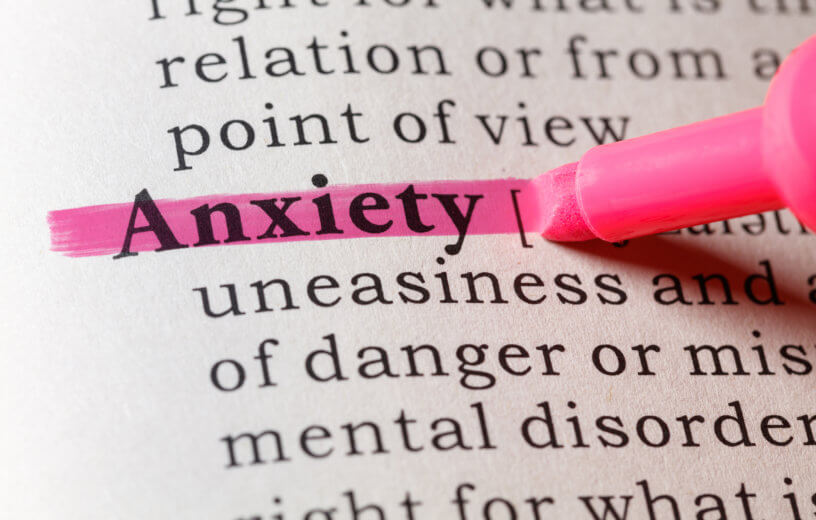UNIVERSITY PARK, Pa. — Bills, deadlines, obligations and responsibilities. We all have plenty of reasons to stress out on any given day of the week, but most people are able to put their worries aside for at least a couple of hours each day and relax. That, however, is much easier said than done for people who suffer from chronic anxiety. Interestingly, a new study conducted at Penn State University finds that especially anxious people may actually choose not to relax due to a fear that letting go of their worries for a few hours will result in even more anxiety if something bad happens.
We’ve all had the feeling. You’re sitting down for some quiet relaxation and a thought pops in your mind; did you remember to finish that chore, or pay that bill? Its common for people to feel like they’re forgetting something, but for many suffering from anxiety this is a constant, creeping feeling of impending doom that makes it nearly impossible to relax for fear of something awful happening while they are slacking off.
According to researchers, people who are particularly prone to negative emotion changes, such as quickly shifting from feeling relaxed to overwhelmingly afraid, are most at risk of feeling anxious while being led through relaxation techniques like meditation or yoga. Michelle Newman, the study’s author and a professor of psychology at Penn State, refers to this tendency as “relaxation-induced anxiety.”
“People may be staying anxious to prevent a large shift in anxiety, but it’s actually healthier to let yourself experience those shifts,” Newman explains in a release. “The more you do it, the more you realize you can do it and it’s better to allow yourself to be relaxed at times. Mindfulness training and other interventions can help people let go and live in the moment.”
The study is also noteworthy because it illustrates how relaxation strategies intended to help people feel better may result in a worse state of mind and more anxiety among certain people.
“People who are more vulnerable to relaxation-induced anxiety are often the ones with anxiety disorders who may need relaxation more than others,” comments psychology graduate student Hanjoo Kim. “And of course, these relaxation techniques were meant to help, not make someone more anxious. Our findings will hopefully serve as a cornerstone for providing better care for these populations.”
Relaxation-induced anxiety has been acknowledged by the psychological community since the 1980s, but an actual cause for the condition has never been agreed upon. However, when Newman developed the contrast avoidance theory in 2011 — a notion that suggests people suffering from generalized anxiety cloak themselves in pessimism at all times as a type of defense mechanism against negative events — she speculated that her theory and relaxation-based anxiety may be connected.
“The theory revolves around the idea that people may make themselves anxious intentionally as a way to avoid the letdown they might get if something bad were to happen,” Newman says. “This isn’t actually helpful and just makes you more miserable. But, because most of the things we worry about don’t end up happening, what’s reinforced in the brain is, ‘I worried and it didn’t happen so I should continue worrying.’”
In all, 96 college students were gathered for this study. Of that group, 32 were diagnosed with generalized anxiety disorder, 34 had major depressive disorder, and 30 had neither disorder. Each participant was taught a series of relaxation techniques, then were shown a series of videos intended to illicit fear or sadness. Next, participants answered some questions designed to measure how susceptible they were to emotional changes. For instance, researchers were interested to see if certain students were more uncomfortable with the negative emotions brought out by the videos immediately after attempting to relax, while other participants may have found the relaxation techniques helpful for dealing with the videos and subsequent emotional shifts.
Finally, participants were led through an additional relaxation session before completing a second series of questions. This time around, the questions were designed to measure participants’ anxiety levels during the second relaxation session.
The research team discovered that participants diagnosed with anxiety were much more sensitive to drastic shifts in emotion, such as going from relaxed to scared or worried almost instantly. This observed sensitivity was linked to anxious feelings during the relaxation sessions. It is worth noting that similar results were found among participants dealing with depression, but the effect was not as strong.
The study’s authors hope that their findings help clinicians and other mental health professionals provide more comprehensive and specialized care for people dealing with anxiety.
“Measuring relaxation-induced anxiety and implementing exposure techniques targeting the desensitization of negative contrast sensitivity may help patients reduce this anxiety,” Kim said. “Also, it would be important to examine relaxation-induced anxiety in other disorders, such as panic disorder and persistent mild depression.”
The study is published in The Journal of Affective Disorders.
